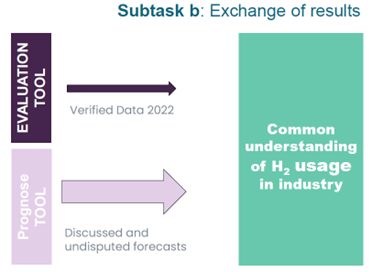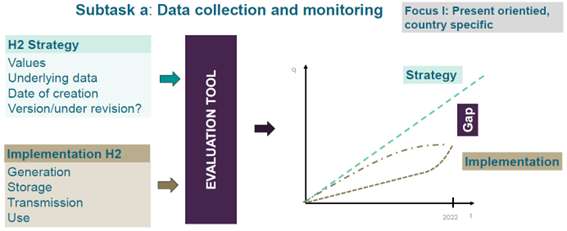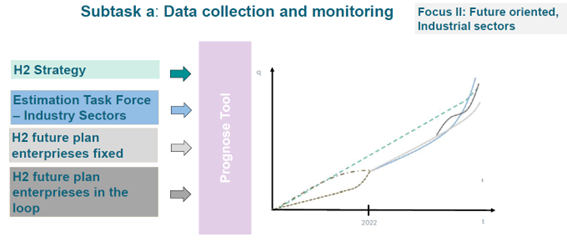IEA Hydrogen Task 48: Future demand of Hydrogen in Industry
Short Description
The consumption of hydrogen in the different industrial sectors plays a decisive role in the further development of a carbon-neutral economic system as already mentioned by Net Zero Industry Mission. Therefore it is necessary to monitor the R&D and technical developments in the individual industrial sectors and to follow the implementation scenarios and the actual implementations.
This Task will gather experts from different countries and institutions to work out relevant contribution in the assessment of different technologies using Hydrogen in Industry by:
- provide a clear and regularly updated picture of the current state of using hydrogen in different industry sectors;
- provide decision makers, stakeholders and the public with clear elements to assess and compare the possibilities to use hydrogen in industry, especially with the focus on the ramp up of the hydrogen production facilities
Structure
Subtask a: Data collection and monitoring
- Collection of roadmap of the agreed industry sectors
- Monitoring of the implementation steps in the diffent roadmaps
Subtask b: Exchange of results
- Close cooperation with Mission Innovation
- Close cooperation with other relevant TCP's
Subtask c: Coordination of Outreach
- Information events (workshops, seminars, conferences)
- Publications
Task Force:
A task force consisting of representatives from Net Zero Industry Mission, Clean Hydrogen Mission, TCP IETS, TCP Hydrogen and other involved IEA Working Parties will meet twice a year and comment on progress from their perspective.
Subtask a
In Subtask a the collecting and elaborating of existing strategies and roadmaps of various industries worldwide is done. This requires a detailed but generally valid evaluation procedure in which the various decarbonisation strategies of the individual industrial sectors are worked out in order to be able to make a qualified statement about the implementation probabilities. Within Subtask a two different tools will be developed.
The Evaluation Tool (see Figure 1) focuses on the H2 strategies of different countries and is present oriented. A central output is to determine if there is a gap between the ramp-up of H2 technologies and the initial plan based on the H2 strategy.
The future perspective is part of the Prognoses Tool (see Figure 2). With the input of the Task Force and other stakeholders of the industrial sector scenarios are formed to determine the realistic implementation of H2 in the industry. Clusters, industry associations and other representatives of interests from the industry will give hereby a central input.

Subtask b and c
The aim of Subtask b is to create a common understanding of H2 usage in the industry. Subtask b has the task of maintaining the transfer of knowledge between the results from Subtask a (see Figure 3) and the other international groups. Subtasks c will be responsible for all outreach activities of the Task.
Participants
Austria (operating agent), Australia, Denmark, Germany, Spain, Sweden, UNIDO, USA
Contact Address
Project lead
Prof. DI Dr. Horst Steinmüller
WIVA P&G – Wasserstoffinitiative Vorzeigeregion Power & Gas
Magazingasse 7
A-4020 Linz
E-Mail: steinmueller@wiva.at


